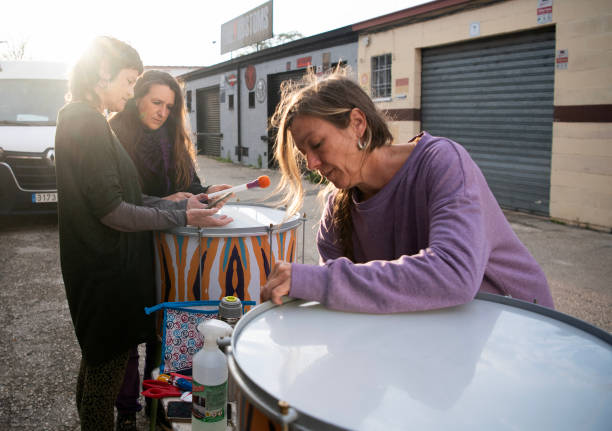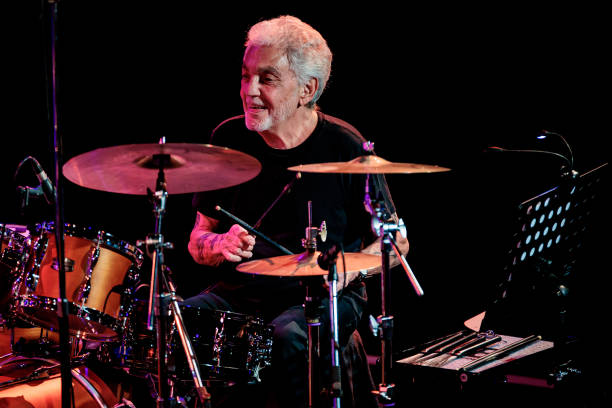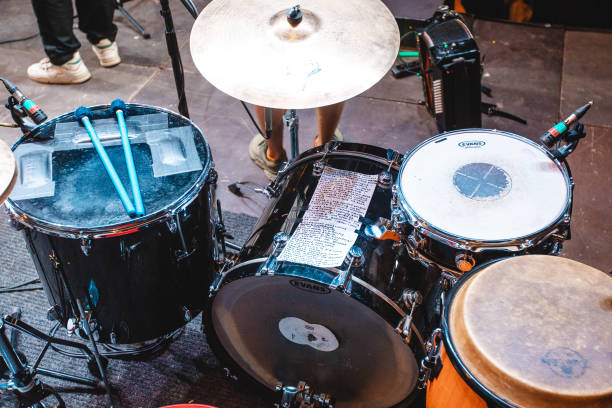Brazil’s music pulses with rhythm. It’s raw, alive, and unmistakably vibrant. Whether it’s the festive swing of samba echoing from Rio’s streets or the earthy groove of maracatu rising from Pernambuco’s heart, there’s a heartbeat in every bar. For drummers looking to stretch their feel and broaden their musical voice, Brazilian rhythms are not just a good idea; they’re essential.

Why Brazilian Grooves Are Essential for Modern Drummers
If you’ve ever played in a band and someone called for a “samba feel,” you know the look everyone gives the drummer. It’s on you. And if all you’ve got is a shaky right-hand 16th groove and a random snare hit, you’re not doing it justice.
Brazilian rhythms teach coordination, feel, phrasing, and more than anything, respect for space. These aren’t grooves you just” play”: you inhabit them.
1. Samba: The Soul of Brazil
Samba is Brazil. It’s what the world hears during Carnival, but there’s more to it than whistles and fast feet.
On a drum set, samba translates into a conversation between limbs. The kick drum mimics the surdo (deep bass drum), the hi-hat or ride carries the quick choppy pulse of the tamborim, and the snare acts as the caixa or repinique, providing accents, ghost notes, and occasional fireworks.
Pro tip: The samba feels better when you think of it as a forward motion, almost like riding a wave. Don’t think stiff. Think sway.
Exercise:
Try a basic samba ostinato:
- Right hand: steady 16ths on ride or hi-hat
- Left hand: offbeat accents and ghost notes
- Kick: “bo-doom… bo-doom” pattern emulating the surdo
2. Bossa Nova: The Smooth Talker
Made popular worldwide thanks to João Gilberto and Antonio Carlos Jobim, bossa nova is the more laid-back cousin of samba. Think late nights, dim lights, soft guitar, and hushed vocals.
The drum set approach here is delicate. Often played with brushes, it’s more about texture than force.
What’s key here?
Subtle independence. The ride pattern follows a syncopated phrasing, while the bass drum and hi-hat lightly emulate the groove of samba, but everything is understated.
Human tip: Less is more. With bossa nova, the groove is the whisper, not the shout.
3. Maracatu: Heavy and Hypnotic
From the northeast comes maracatu, a groove rooted in Afro-Brazilian tradition. It’s slower, deeper, and packs a punch.
This is where your backbeat control gets a workout. Imagine a marching rhythm with swung phrasing and tension. That’s maracatu.
The snare imitates the alfaias and caixas (traditional drums), while your kick brings in the bombo flavor.
Feel-wise, this is more primal. There’s a call-and-response nature in the accents, almost like drumming with a purpose beyond the music.
4. Baião: Syncopated Drive
This rhythm has a forward momentum, perfect for jazz fusion or progressive rock. Originating from the northeast, it gives your footwork a challenge.
It’s typically in 2/4 with a syncopated kick drum pulse and light, bright snare hits. Hi-hat patterns vary, sometimes open and pushy, sometimes tight and grooving.
Drummers like Steve Gadd have borrowed from baião, blending it seamlessly into Western contexts.
Groove test: Can you play a baião ostinato and solo over it without losing the groove?

5. Afoxé: Spiritual and Swung
Derived from Afro-Brazilian religious ceremonies, afoxé has a steady, swaying groove that feels almost like a shuffle but with deeper roots.
You’ll often hear it used in Brazilian pop, especially in the works of Gilberto Gil or Caetano Veloso. It’s not aggressive; it pulls you in.
On a drum set, the trick is in the open-close hi-hat feel and the syncopated snare placement. It’s about vibe more than complexity.
Frequently Asked Questions
1. Do I need to study traditional Brazilian percussion to play these grooves on a drum set?
While it’s not mandatory, it helps immensely. Understanding where these rhythms come from: surdo, caixa, tamborim, gives you a deeper feel when translating to the kit.
2. What’s the best way to internalise Brazilian rhythms?
Listen. A lot. Spend time with Brazilian artists. Play along. Take one rhythm a week and live with it. And if you can, play with a percussionist, you’ll learn faster than you ever could alone.
3. Can these grooves fit into non-Brazilian music genres?
Absolutely. Brazilian rhythms have seeped into jazz, rock, hip-hop, funk, and even electronic music. You don’t have to be a samba band to make use of these grooves. It’s all about taste.
4. How do I make Brazilian rhythms sound authentic?
Authenticity comes from respect, not replication. Learn the origins. Understand the feel. Then play them your way, but with soul.
Final Thoughts: Let the Groove Move You
Brazilian rhythms aren’t just about technique; they’re about life. They carry stories, history, celebration, and struggle. As a drummer, your job isn’t just to play them. It’s to feel them.
Start slow. Play two recordings. Get your coordination right, but don’t stay stuck there. These rhythms want to move, sway, speak, and dance.
So let them.
